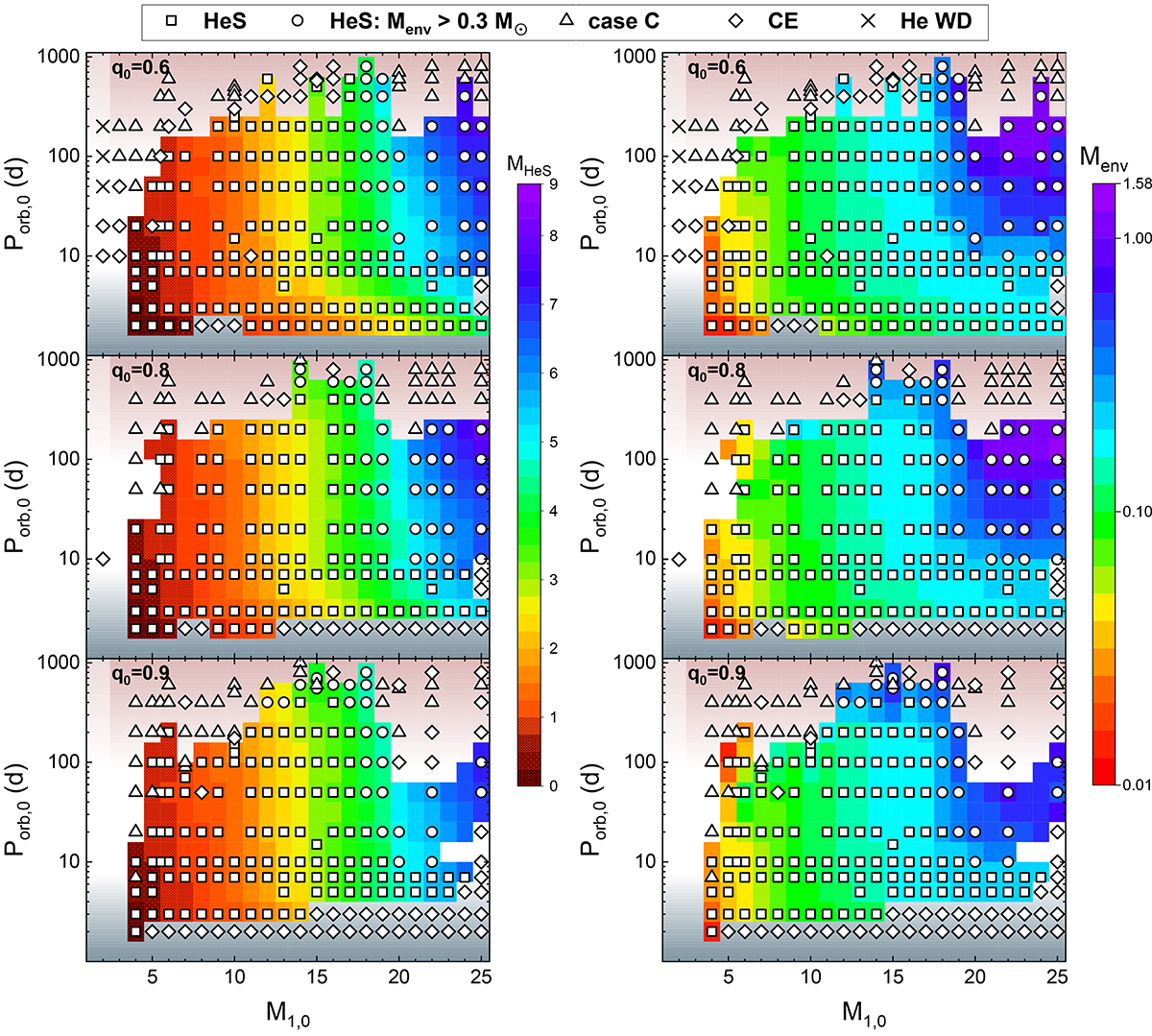Fig. 1.

Download original image
Grid of computed systems. Left panel: models of binaries with initial mass ratios, q0 = M2, 0/M1, 0 = 0.6, 0,8, 0.9 in the “ZAMS mass of the primary component, M1, 0 – initial orbital period, Porb, 0” plane. Color-coded are the masses of the remnants of primary components of the binaries after RLOF at the point of the lowest luminosity along the post-mass-exchange evolutionary track, obtained by a numerical approximation of the results of the computation of a non-regular grid of models. The legend over the upper panel shows the evolutionary “fate” of the computed binaries. Open squares and circles indicate the formation of HeS stars (in the latter case, with retained H/He envelopes exceeding 0.3 M⊙). The diamonds show binaries entering common envelopes. Open triangles stand for binaries where case C mass transfer occurred. In the light gray region at the top left of the middle and lower panels, the models for q0 = 0.9, 0.8 were not computed, since binaries in this region definitely experience case C mass transfer and form common envelopes, or the Teff of the stripped component never exceeds 25 000 K. Crosses mark the systems forming He WDs. The “pixels” overplotted by dots show the locations of the progenitors of stripped helium remnants with masses < 1 M⊙. Right panel: color-coded masses of H/He envelopes retained by the remnants of the initial primary components shown in the left panel at Lmin along their tracks (with steps 0.01 M⊙ and 0.1 M⊙ below and above Menv = 0.1 M⊙ respectively). All masses are in M⊙.
Current usage metrics show cumulative count of Article Views (full-text article views including HTML views, PDF and ePub downloads, according to the available data) and Abstracts Views on Vision4Press platform.
Data correspond to usage on the plateform after 2015. The current usage metrics is available 48-96 hours after online publication and is updated daily on week days.
Initial download of the metrics may take a while.


